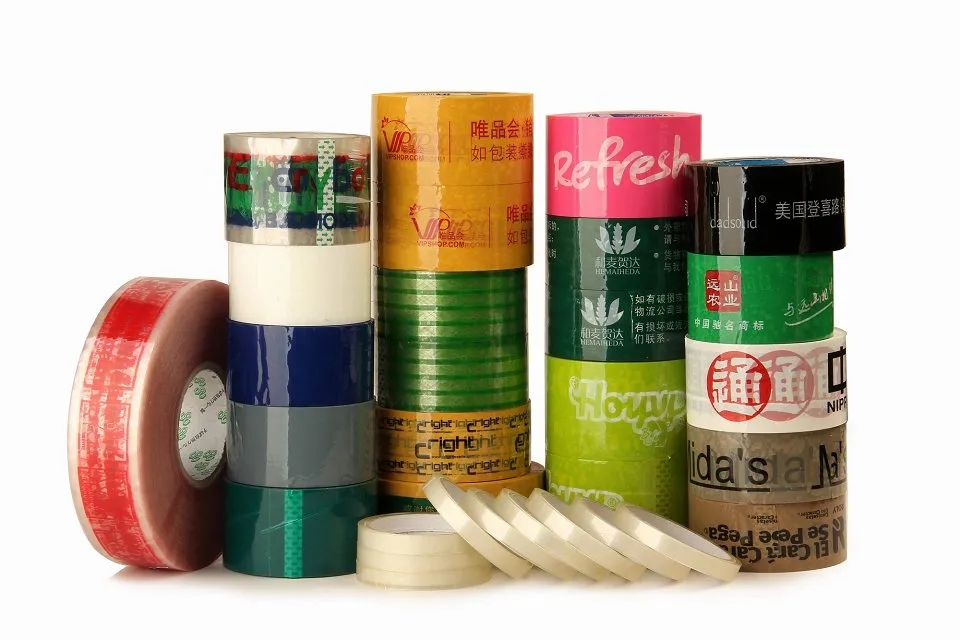Contacts:Mr. Zhang
Mobile phone:+86 13824364746
Telephone:0752-6321068
Email:526986439@qq.com
Address: Limeite Industrial Park, Jintang Industrial Park, Huzhen town, Boluo County, Huizhou City, Guangdong Province
Is the food label printing process prone to problems? One of the four links must be controlled
Website editor: Yang Qing │ Time of publication:2020-08-25
With the continuous development of China's economy, adhesive materials are more and more widely used in the field of food packaging. It is well known that food packaging requires high safety requirements for packaging materials, and labels are no exception. So how do you keep food labels safe? In this paper, the author combined with practical work experience to share some experience, hope to give readers some help.
The self-adhesive labels used for food packaging are mainly divided into two categories: one is the labels in direct contact with food, such as fruit labels; The second is indirect contact with food labels, such as the labels attached to food packaging boxes. Relatively speaking, the labeling safety requirements of direct contact food are relatively high. Generally, the materials must meet the requirements of FDA certification. Indirect contact food labeling requirements are relatively low, as long as it meets national standards. At present, most of the adhesive labels used in the market are indirect contact with food labels. What kind of material can be used to label food, whether by direct or indirect contact?
Generally speaking, can be classified according to adhesive material surface material and glue. Adhesive materials according to the different surface materials can be divided into paper and film materials. Paper type of surface material of adhesive material most food labels can be used to do, and film class surface material of pressure sensitive materials mainly divided into PE, PP, PET and other special film, PE and PP materials, non-toxic, can be used for processing food labels, and other film surface material self-adhesive materials based on their attributes are needed to determine whether the tag can be used to processed foods. In practical applications, film label materials are mainly used for food packaging that is not in direct contact.

Self-adhesive materials according to the type of glue can be divided into three types of hydrosol, hot melt adhesive and solvent adhesive. Among them, the material of hydrosol and hot melt glue can be used in food label, and the solvent glue has certain toxicity, do not meet the requirements of food materials. In practical applications, hydrosol adhesive and paper surface material and film surface material have a more extensive application, and hot melt adhesive material due to its own liquidity is very strong, the processing process is relatively easy to overflow glue, so widely with paper surface material made of adhesive material, and film surface material with relatively less.
In addition, according to the different storage environment, food labels can be divided into two categories: refrigerated storage and room temperature storage. The corresponding self-adhesive materials of these two types of labels are different. The label requirements of food stored at room temperature are relatively low, which only needs to meet the requirements of room temperature labeling. At present, most self-adhesive materials on the market can meet the requirements. The label requirements of refrigerated food are relatively high, most of which are required to be labeled and preserved in a low temperature environment, which requires high viscosity of sticker materials: on the one hand, the viscosity of sticker materials in a low temperature environment will be affected by temperature and decrease; On the other hand, after labeling, preservation in low temperature is not conducive to the performance of label stickiness. Therefore, for some foods that need to be labeled and preserved in a low temperature environment, it is recommended to use a special low-temperature glue label.
Different combinations can make different types of adhesive materials. However, no matter how they change, the adhesive materials used for food labels must conform to national standards or FDA certification standards.
Many food labels need to be printed, and commonly used inks contain large amounts of organic solvents such as toluene and xylene. Pigments may also contain heavy metals. Therefore, the choice of appropriate ink printing food labels is very important.
At present, mainstream printing inks are divided into water-based inks, UV inks and solvent inks. Among them, water-based ink is almost non-toxic and does not contain heavy metals, which is most suitable for food label printing. UV ink contains less harmful substances, most UV ink can be detected by SIS, most of the indirect contact of food packaging; Solvent ink due to solvent as the carrier, do not meet the requirements of the safety of the food label, but solvent ink printing speed, low cost, especially suitable for large quantities of food packaging printing, real life many food packaging by solvent ink printing, this is because the outer layer of the printing and packaging and food contact with the inner will have a layer of lining will be food and outer separated, conform to the requirements for food packaging.
It is worth noting that no matter what kind of ink, the quality will be uneven. Therefore, ink suppliers used to print food labels must provide the appropriate test reports and certification data to prove that the ink meets the relevant food printing standards. At present, China's food label printing ink for the implementation of the standard GB 9685-2008 food containers, packaging materials additives use health standards.
Traditional self-adhesive printing process is mainly letterpress and flexographic printing, while these two printing methods mainly use UV ink and water-based ink printing, which can be used to produce food labels. However, due to the high hygiene requirements of food labels, the processing environment requirements of food labels are also more stringent.
Generally speaking, food label printing needs to keep the workshop clean. Before entering the workshop, workshop operators should change special work clothes and work shoes. In and out of the workshop, they should go through the wind forest to remove dust, so as to avoid contamination of food labels by external dust. In addition, in the food label printing production process, there are many details to pay special attention to. For example, self-adhesive raw materials used in the production of food labels must be fully packaged and must not be exposed to air halfway before printing. Unused raw materials should be wrapped in plastic bags or wrapped in shrinkage film, and should not be directly exposed to the air; In the production process, semi-finished products should not be placed directly on the ground, but should be placed on a clean card board. It is strongly recommended to use plastic card board, because this kind of card board is cleaner than wood card board, it is not easy to produce dust, which is more conducive to keep the label semi-finished products clean.
Food label production workshop should be cleaned and arranged frequently. Workshop should strictly in accordance with relevant standards to control the scene "5 s" management, keep the field clean and tidy, at the same time to shop ~ a certain humidity, suggest to control the workshop humidity 50% ~ 60%, the humidity environment can effectively restrain and eliminate static electricity, dust or if the dust in the workshop, electrostatic, could easily lead to dust by electrostatic adsorption finished or semi-finished products in the printing surface, thus pollution food labels.
After the production of food labels, packaging is also critical. The packaging environment of food labels should be clean and free of static electricity. The finished products should be automatically packaged to reduce the secondary pollution of the finished products. It is suggested that printing enterprises should set up a clean workshop to package food labels.
Different printing equipment has different effects on food labels. Some equipment is limited by its own design, in the production process is easy to cause pollution to food labels, such as the early slant type trademark machine, this equipment in the production process ink is particularly easy to stick to the label surface, if it is printing food labels will cause pollution to food labels. Again, such as some polishing equipment in the process of polishing oil due to the ink closure is not good, it is easy to lead to the light oil dripping onto the surface of the material, thus causing pollution to food labels.
The rotary automatic label printing equipment is more suitable for processing food labels. These machines are highly automated, operate materials in a continuous manner, and can be programmed to automatically adjust ink volume, overprint and other automatic operations during printing. Even if there is a problem in the production process, in most cases the operator can use the computer control system installed in the equipment to make adjustments and correct problems in the printing process in a timely manner. This reduces the operator's direct contact with the material and minimizes the possibility of contamination.
It should be noted that in recent years, digital printing equipment has been widely used in the field of label printing, which is also suitable for food labels. In particular, more categories, a small number of products, often need to change the layout of food label printing. Coca-Cola's highly personalized food packaging, launched in partnership with a well-known digital printing equipment manufacturer in the industry, is a success story that is also reaching food Banks The industry is sending strong signals that the digital age of food labelling may be just around the corner.
The above is a summary of the production process related to the safety of food labels several key points. The actual production process of food label is a complicated and tedious process, and some details are likely to pollute the product if not handled properly. Content written by the author in this article, it is impossible to cover all the details of production, to ensure the safety of the food label, also need the production supervisors paying attention to every detail, in the process of production found in each production link problems may arise, in this way can we really do it for a rainy day, foolproof. The above is a summary of the production process related to the safety of food labels several key points. The actual production process of food label is a complicated and tedious process, and some details are likely to pollute the product if not handled properly. Content written by the author in this article, it is impossible to cover all the details of production, to ensure the safety of the food label, also need the production supervisors paying attention to every detail, in the process of production found in each production link problems may arise, in this way can we really do it for a rainy day, foolproof.
- What preparations should enterprises make in the face of VOCs special inspection?2020-06-20
- Printing and packaging enterprises to see, the second batch of industrial products green design demonstration enterprises began to declare!2020-06-05
- In the post epidemic era, there are four inevitable trends in the field of packaging2020-05-19
- Under the new normal of epidemic prevention, is the printing and packaging industry "flying with wings" or "dancing with epidemic diseases"?2020-05-15
- Food label printing process easy to produce problems? One of these four links must be controlled2020-08-25
- Production workshop abnormal frequent occurrence, management to do so effectively, you do the right?2020-07-31
- Physical and chemical methods for inhibiting oxygen polymerization inhibition2020-07-30







